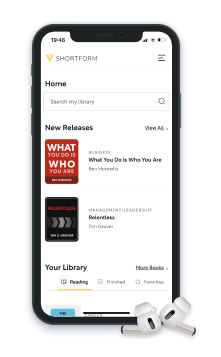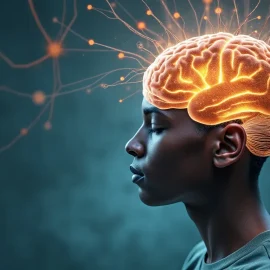
This is a free excerpt from one of Shortform’s Articles. We give you all the important information you need to know about current events and more.
Don't miss out on the whole story. Sign up for a free trial here .
Can having a short attention span be a good thing? What advantages might shorter attention spans offer in an information-loaded environment?
Some experts say yes—it’s an adaptive response that helps us navigate today’s information load through better task prioritization, faster visual processing, and the ability to focus intensely when necessary. Therefore, we should work with it rather than against it.
Continue reading to learn how attention spans have decreased and that might not be a bad thing.
Short Attention Spans as Evolution
Many see having a short attention span as a crisis of the digital age, but new evidence suggests the evolution in human information processing actually helps people better navigate today’s complex world.
Modern Attention Span Difficulties
As smartphones and social media platforms transform how people engage with information, attention patterns have evolved dramatically. Studies show that attention to any single screen dropped from 2.5 minutes in 2004 to 47 seconds in recent years. People now depend on constant streams of news, trends, and social updates, often feeling uncomfortable if they don’t have regular access to new information.
This shift comes with costs. Frequent task-switching leads to increased errors, longer completion times as people must repeatedly reorient to their tasks, and elevated stress levels—including measurable increases in blood pressure. Some users check their phones hundreds of times daily, creating a perpetual cycle of interruption and refocusing.
| Why Is Task-Switching So Bad? When you’re paying attention to too many things, you risk overloading your attention. In Hyperfocus, Chris Bailey suggests two more reasons based on your brain’s biology. #1: You don’t encode your memories properly. Bailey explains that when you’re focused on a task, you use your hippocampus—the brain region responsible for storing and recalling memories. But when you multitask and task-shift, you use your basal ganglia. The basal ganglia is the brain region responsible for performing habits and learning skills. Since you’re not using the brain area devoted to memory, you can’t encode what you’re doing properly, so you don’t remember it as well. Bailey argues that this harms productivity because you don’t remember your mistakes. If you don’t remember the mistakes you made on a task the first time, you’re far more likely to make those same mistakes again. #2: Your brain doesn’t forget tasks quickly. Bailey explains that when you stop doing a task, you don’t forget it immediately. Rather, tasks leave behind mental residue. In other words, they remain in your working memory for some time before they eventually disappear. So if you stop doing Task A and immediately move onto Task B, you can’t totally focus on Task B. Task A still occupies some portion of your working memory. When you constantly shift between the same tasks, you never stop doing any one of them long enough for its mental residue to completely dissolve. Since you’re always thinking about the last task you stopped doing, you’re never able to focus fully on a single task—which makes completing these tasks take longer. In this way, task-shifting negatively impacts productivity. |
The impact appears in broader behavior patterns. Adults now spend 17 fewer minutes on any single media source compared to previous years, with a more pronounced decrease among viewers aged 16-34 of 24 minutes. Even when not actively using phones, many people keep them in hand, suggesting a physical and psychological dependency beyond information consumption.
These changing attention patterns and the information landscape now shape each other in a continuous cycle. Content creators and platforms have built strategies around shorter attention windows, with news organizations capping articles at 500 words, movie shots averaging less than five seconds, and platforms like TikTok and Instagram Reels delivering ultra-brief content formats.
As audiences develop faster processing abilities, content becomes briefer, which in turn influences how people engage with information. Companies track these shifts closely, using sophisticated measurement tools to monitor and encourage viewer engagement, further refining content to match and influence evolving attention habits.
How They Can Be a Good Thing
While these changes present real challenges, research suggests shorter attention spans might represent a necessary adaptation to modern information demands rather than a pure deficit. Psychologists emphasize that attention is highly task-dependent, varying based on individual circumstances and specific demands. This evolved attention style offers several advantages.
First, it enables better task prioritization—modern attention patterns reflect more discriminating choices about what deserves focus, as people constantly evaluate tasks against other potential uses of their limited time. This flexibility helps people manage an overwhelming amount of information efficiently.
Second, shorter attention spans have improved how people process visual information. For instance, modern audiences can comprehend rapid film sequences that would have confused earlier generations; movie shots have gotten progressively shorter because viewers have become more skilled at quickly processing visual information.
Third, despite frequent task-switching, people retain the ability to concentrate deeply when needed—from TSA agents maintaining focus during two-hour bag screenings to teenagers engaging in extended gaming sessions—suggesting that modern attention patterns represent an expansion of cognitive capabilities rather than a loss.
As society adapts to changing attention patterns, experts recommend developing better self-awareness and control rather than fighting distractions. Instead of trying to eliminate interruptions, understand what drives your task-switching—is it boredom or procrastination? Then, to maintain focus, visualize specific end-of-day goals, like relaxing in front of your favorite show after finishing key tasks.

Want to fast-track your learning? With Shortform, you’ll gain insights you won't find anywhere else .
Here's what you’ll get when you sign up for Shortform :
- Complicated ideas explained in simple and concise ways
- Smart analysis that connects what you’re reading to other key concepts
- Writing with zero fluff because we know how important your time is






